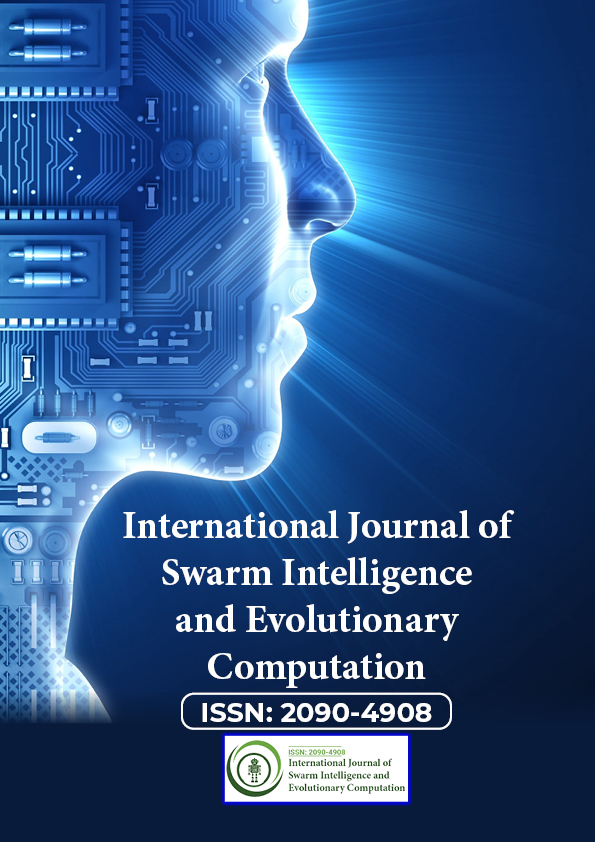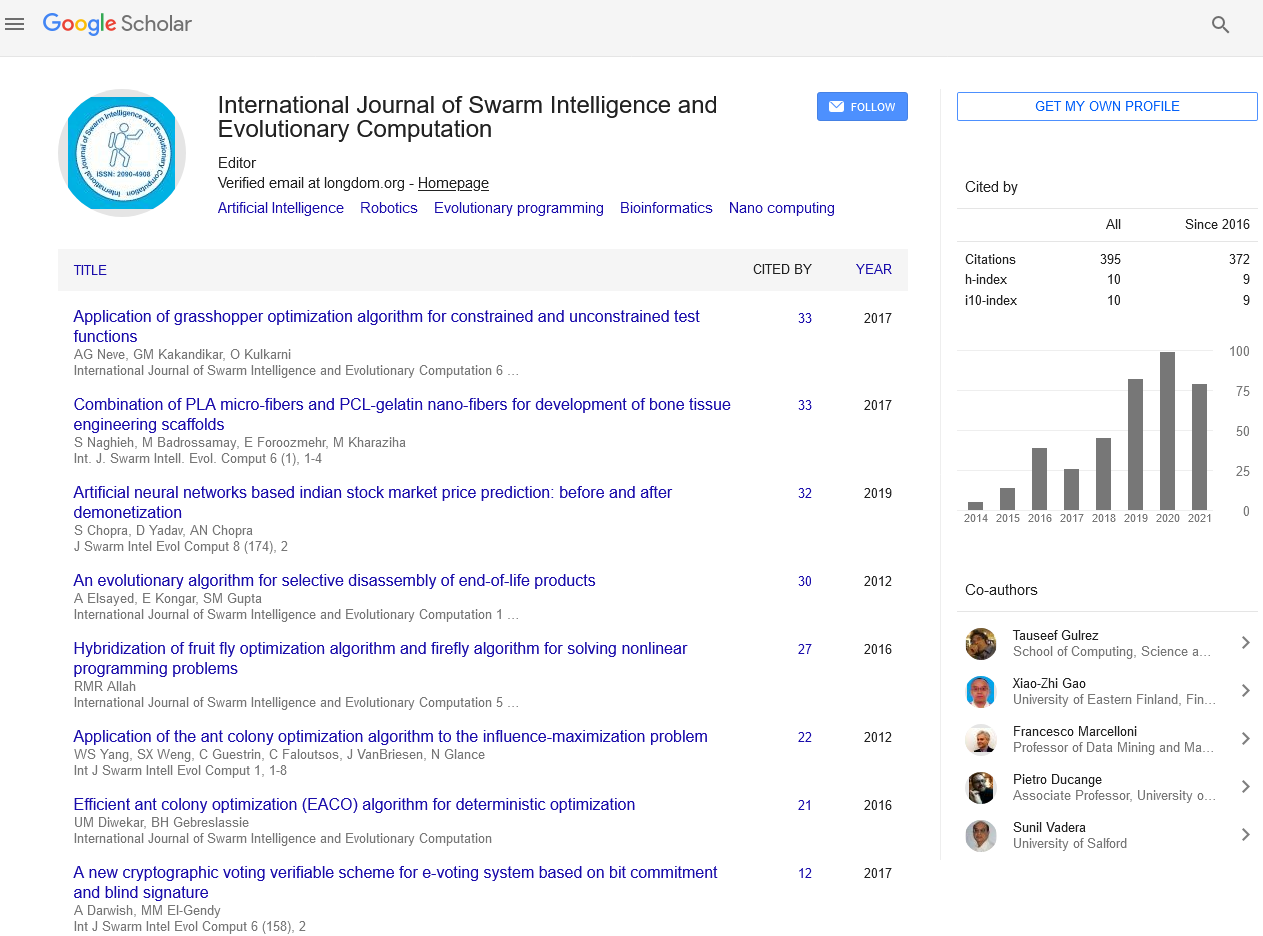Indexed In
- Genamics JournalSeek
- RefSeek
- Hamdard University
- EBSCO A-Z
- OCLC- WorldCat
- Publons
- Euro Pub
- Google Scholar
Useful Links
Share This Page
Journal Flyer

Open Access Journals
- Agri and Aquaculture
- Biochemistry
- Bioinformatics & Systems Biology
- Business & Management
- Chemistry
- Clinical Sciences
- Engineering
- Food & Nutrition
- General Science
- Genetics & Molecular Biology
- Immunology & Microbiology
- Medical Sciences
- Neuroscience & Psychology
- Nursing & Health Care
- Pharmaceutical Sciences
Editorial - (2021) Volume 0, Issue 0
Research Advancement in Swarm Robotics and its Applications
Xiang Zhao*Received: 06-Oct-2021 Published: 27-Oct-2021, DOI: 10.35248/2090-4908.21.s6.e004
Description
From nature swarm robotics is being inspired, which could be a combination of swarm intelligence and robotics, which shows a good effect in several aspects. Most of the researchers who are working within the field of swarm intelligence are inspired from the nature swarms, like social insects, fishes or mammals, interact with one another within the swarm in real life. Here the size may range from some individuals living within the small natural areas to highly organized colonies that will occupy the massive spaces or territories and which may comprises more than millions of individuals. These individual who thereby forms groups showing great flexibility and robustness, like path planning, task allocation, nest constructing, and lots of other complex collective behaviors in various nature swarm. Since 1980’s swarm intelligence has attracted many researchers' attention in emerging research area. It’s now become a very important aspect in most of field including artificial intelligence, economics, sociology, biology, etc. Swarm intelligence could be a soft bionic of the nature swarms which stimulates the social structures and interactions of the swarm instead of the structure of an individual in traditional artificial intelligence. This system consists of a group of simple individuals autonomously controlled by a plain set of rules and local interactions. The swarm can complete the tasks that a complex individual can do while having high robustness and adaptability with an occasional cost. It takes the whole advantage of the swarm without the necessity of global model and centralized control, and also provides great solution for large-scale sophisticated problems. Swarm robotics is understood to be an approach to the coordination of multiple robots as a system which consists of large numbers of mostly simple physical robots. The research of swarm robotics is to study about the planning of robots, their physical body and their controlling behaviors. Swarm behavior involves a constant change of individuals in cooperation with others, as well as the behavior of the entire group. Unlike distributed robotic systems generally, swarm robotics emphasizes a large number of robots, and also promotes scalability, for instance by using only local communication as an example which might be achieved by wireless transmission systems, like frequency or infrared.
Applications
There are many potential applications for swarm robotics which includes tasks that demand miniaturization called nanorobotics, microbotics, like distributed sensing tasks in micromachinery or the human body. One of the most important and promising uses of swarm robotics is included in disaster rescue missions. During this case a swarm of robots of various sizes might be sent to places rescue workers can’t reach safely; to detect the presence of life via infra-red sensors and also swarm robotics are often suited to tasks that demand cheap designs, as an example agricultural foraging tasks or mining. US service has used swarm of military robots which might form an autonomous army. Most of them test only a swarm of small groups, but within the year 2014 Harvard has been demonstrated using of swarm consisting of 1,024 individual robots and another large set of applications could also be solved using swarms of micro air vehicles. It’s being employed in drone display, where it commonly uses in multiple lighted drones at night for an artistic display.
Citation: Zhao X (2021) Research Advancement in Swarm Robotics and its Applications. Int J Swarm Evol Comput. S6:e004.
Copyright: © 2021 Zhao X. This is an open-access article distributed under the terms of the Creative Commons Attribution License, which permits unrestricted use, distribution, and reproduction in any medium, provided the original author and source are credited.


